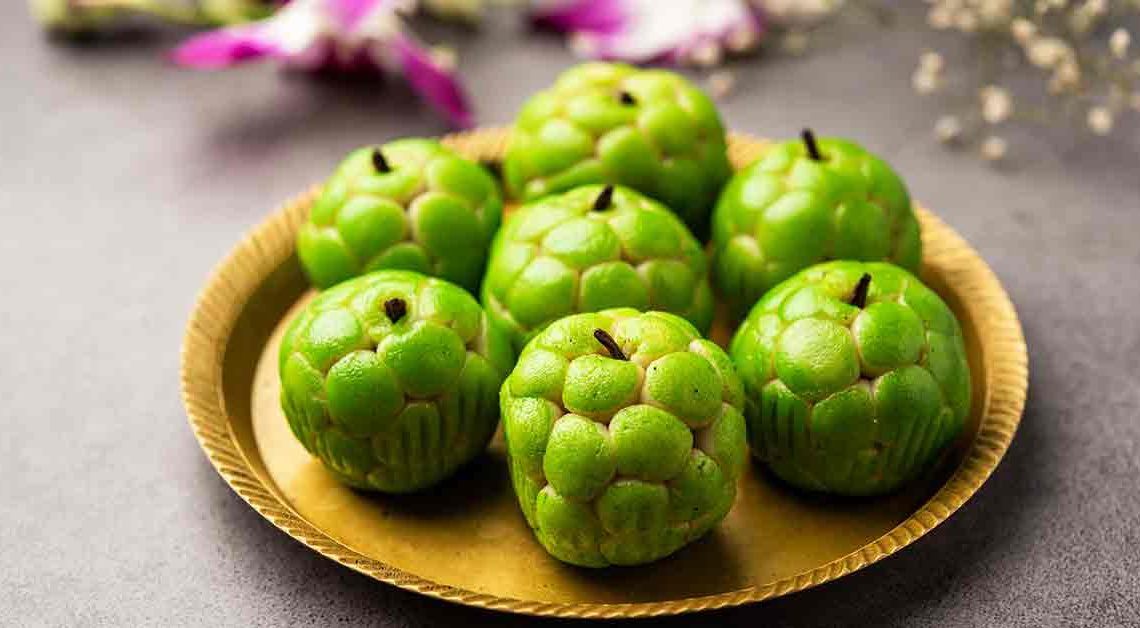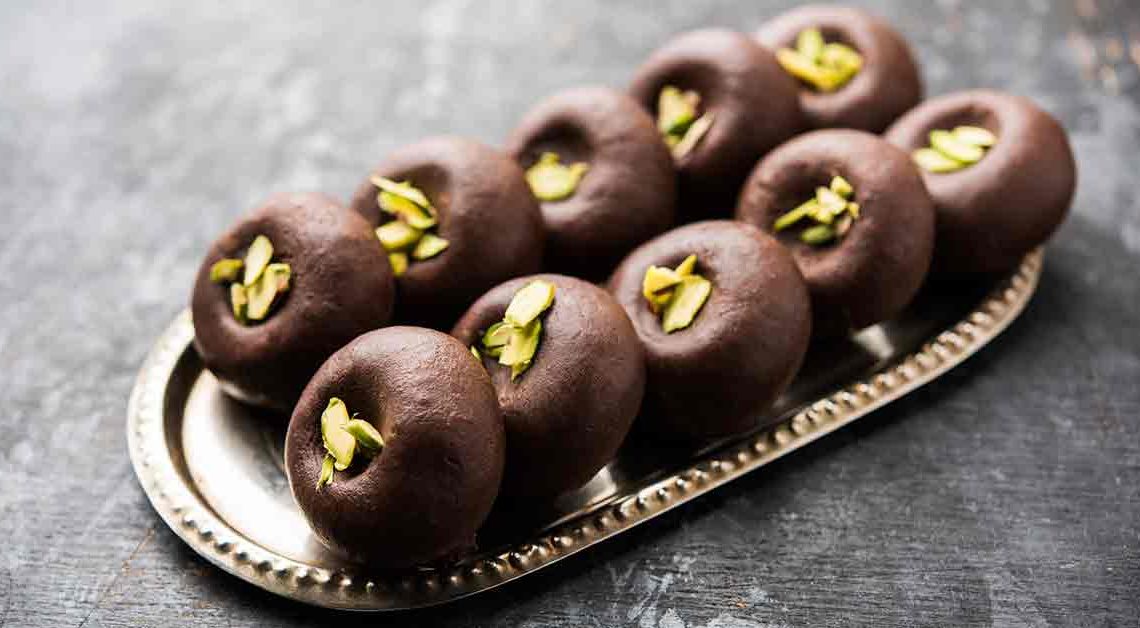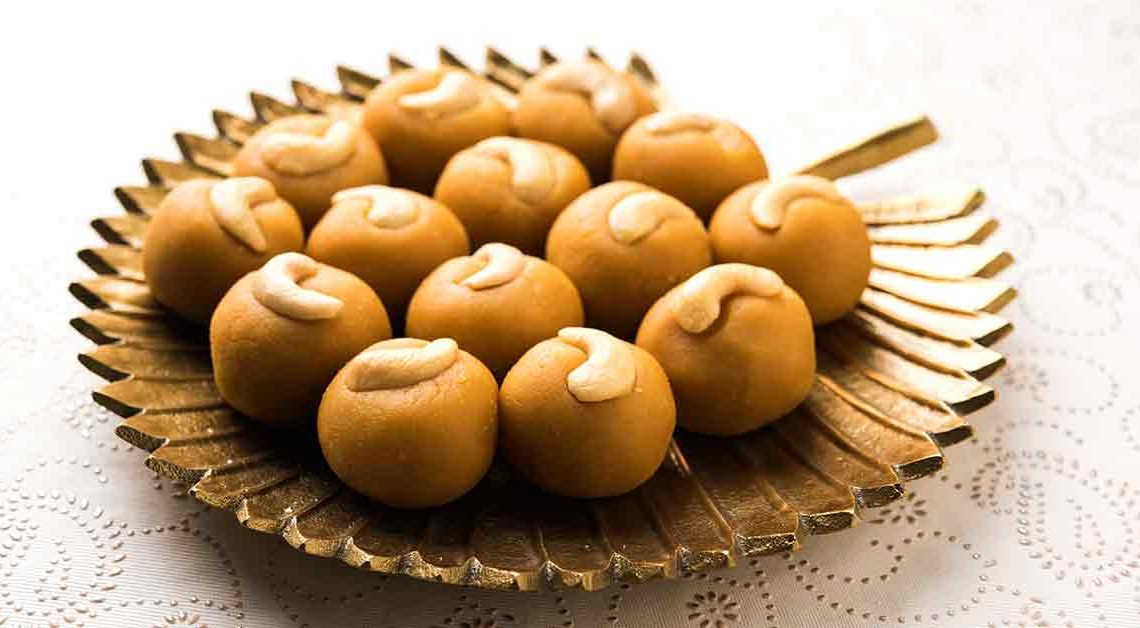Divinely Delicious Sitaphal Peda

Welcome to a delectable journey of flavors and traditions with our enchanting Mithainama! Today, we delve into the heart of India’s culinary heritage to bring you a treat that encapsulates both the essence of tradition and the joy of indulgence – the mouthwatering Sitaphal Peda.
Imagine sinking your teeth into a velvety confection that whispers tales of centuries past with every blissful bite. Sitaphal Peda, also known as Custard Apple Peda, is a timeless delight that harmonizes the lusciousness of ripe custard apple with the rich creaminess of milk. As you savor each nibble, you’ll feel the warmth of age-old recipes and the love that generations have poured into perfecting this masterpiece.
Get ready to create, indulge, and embark on a journey of taste that bridges the past and the present.
Origin of Sitaphal Peda
The origin is rooted in the rich culinary history of India, specifically in the region of Gujarat. Sitaphal, also known as custard apple or sugar apple, is a tropical fruit with a sweet and fragrant flavor. It’s often used in various traditional Indian sweets and desserts. Peda, on the other hand, is a popular milk-based sweet that has been enjoyed for generations.
The fusion of Sitaphal and Peda likely emerged as a regional specialty, where the abundance of ripe custard apples inspired culinary innovators to incorporate the fruit’s unique taste and texture into the traditional Peda recipe. This gave rise to a delightful blend of creamy milk, aromatic spices, and the unmistakable sweetness of custard apples.
The sweet’s popularity grew as it became a cherished treat during festivals, celebrations, and special occasions. Its velvety smoothness and the perfect balance of flavors made it a favorite among all age groups. Families and communities would come together to prepare and share Sitaphal Peda, solidifying its place as a beloved dessert in Indian cuisine.
History of Sitaphal Peda
The history is a tale that intertwines culinary creativity, cultural heritage, and the love for sweets. While specific historical records might be scarce, the evolution of this delightful confection can be traced through the annals of Indian culinary traditions.
The roots are believed to lie in the state of Gujarat, India. Gujarat has a long history of producing and consuming a wide variety of traditional sweets, and it’s likely that the combination of the creamy Peda and the fragrant custard apple emerged here. Custard apples, also known as Sitaphal, were abundant in the region, and ingenious cooks saw an opportunity to incorporate their unique flavor into a classic sweet.
Historically, Indian sweets like Peda have been part of celebrations, rituals, and daily life for centuries. These sweets were often prepared using indigenous ingredients, each region adding its own twist to well-loved recipes. With the inclusion of custard apples, it became a delicacy that exemplified the marriage of local produce and culinary expertise.
Cultural Significance
Sitaphal Peda, with its unique blend of flavors and textures, holds a special place in Indian culture, symbolizing more than just a delightful treat. Its cultural significance is rooted in various aspects of Indian society, celebrations, and traditions.
Festivals and Celebrations: In India, festivals are occasions of joy and togetherness, and sweets are an integral part of these celebrations. It often finds its way onto festive platters, gracing occasions such as Diwali, Raksha Bandhan and Navratri. Sharing it during these festivals signifies sharing happiness and spreading sweetness.
Cultural Diversity: India’s diverse culinary landscape is a reflection of its cultural diversity. Sitaphal Peda, originating in Gujarat, represents the cultural tapestry of this region. When shared and enjoyed across the country, it acts as a unifying factor, bringing together people from different backgrounds to savor a common delight.
Generational Bonding: Traditional recipes like peda often carry memories of past generations. The process of preparing and enjoying these treats fosters connections between older and younger family members.
Where is Sitaphal Peda Famous?
Sitaphal Peda is most famously associated with the state of Gujarat in India, where it originated. Gujarat has a rich culinary heritage and is known for its wide variety of traditional sweets and snacks. Sitaphal Peda stands out as a specialty within this repertoire due to its unique combination of flavors and its connection to the custard apple, also known as Sitaphal.
In Gujarat, it is enjoyed as a popular sweet during various festivals, celebrations, and special occasions. It holds cultural significance and is often prepared in homes, sweet shops, and local eateries across the state. Its creamy texture, the fragrance of custard apple, and the sweetness of milk-based sweets make it a beloved treat among both locals and visitors.
However, if you’re seeking the most authentic and renowned experience of it, a visit to Gujarat, particularly in cities like Ahmedabad, Surat, and Vadodara, would likely offer you the best opportunities to savor this delightful sweet in its traditional setting.
Interesting Facts and Trivia
Certainly, here are some interesting facts and trivia related to Sitaphal Peda:
- The custard apple, known as Sitaphal in India, has the botanical name Annona reticulata. It’s a tropical fruit with a distinctive flavor and aroma.
- It brings together the creamy texture of traditional Peda with the aromatic and sweet flavor of custard apples, resulting in a delightful balance of taste and mouthfeel.
- In Indian culture, the custard apple holds symbolic significance, often associated with fertility, abundance, and love. Including custard apples in Sitaphal Peda could carry subtle cultural meanings.
- The preparation might evoke memories of childhood and family gatherings. It’s a reminder of the significance of passing down culinary traditions through generations.
- Its ability to blend the distinct tastes of custard apple and milk-based sweets highlights the harmonious nature of Indian cuisine, where diverse ingredients unite to create culinary marvels.
Did You Know?
Sitaphal Peda, crafted from the goodness of custard apples and milk, offers a unique blend of flavors that tantalize your taste buds while nourishing your body. Here are some benefits you might not have known:
- Custard apples are a rich source of vitamins, particularly Vitamin C, Vitamin B6, and antioxidants that help support your immune system and overall health.
- The milk used in making Peda provides a dose of calcium and protein, promoting healthy bones and muscles. Additionally, custard apples contain dietary fiber, which can contribute to better digestion and heart health.
- The natural sugars in custard apples give you an instant energy lift, making Sitaphal Peda a great snack to fuel your day.
- Vitamin C and antioxidants in custard apples can contribute to healthier skin by combating oxidative stress and promoting collagen production.
- Traditional Indian sweets often incorporate ingredients with ayurvedic properties. Custard apples are believed to have cooling effects, making Sitaphal Peda a popular choice during warm seasons.







